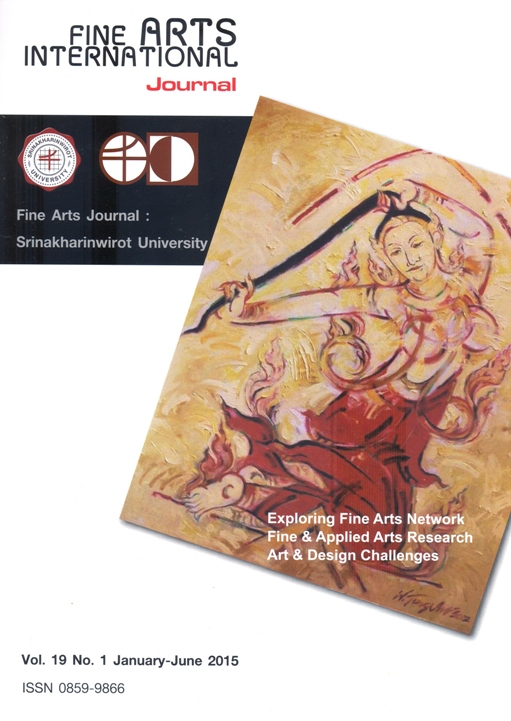The Study of Hom-rong Ta-yoi Diaw Song
Keywords:
Hom-rong, Ta-yoi diaw song, history, componentsAbstract
This research presents the study of Hom-rong Ta-yoi diaw song, which had objectives 1) to study the history of Hom-rong Ta-yoi diaw song and 2) to analyze the components of Hom-rong Ta-yoi diaw song. As a result, the findings can be summarized as followed;
Part 1: The study of the history of Hom-rong Ta-yoi diaw song
Kru Samran Kerdphol was a resident of Ayutthaya province. He started study Thai music with Kru Jamrat Kerdphol and Kru Sangwian Kerdphol. Later, he studied with Kru Petch Jannad, Kru Tieb Konglaithong, Kru Chad Sunthornwatin, Kru Chor Sunthornwatin, and Kru Ard Sunthorn. Kru Samran Kerdphol had composed Hom-rong Ta-yoi diaw song on 1996. Since he discovered that Grao overture was composed, he composed Hom-rong Ta-yoi diaw song to performed against Grao overture and passed on to his students in the Phatthayarat Piphat ensemble to perform for Her Royal Highness Princess Mahachakri Sirindhorn in 1999. After that, it was passed on to the students in College of Music, Mahidol University and performed in many important events.
Part 2: The analysis of the components of Hom-rong Ta-yoi diaw song
Hom-rong Ta-yoi diaw song was a Thai verse overture, which had both slow and middle speed beats and used Song Mai rhythm. It was suitable to be performed by double Piphat ensemble. In addition, there were many performing techniques including whole band Thirty-second notes, Sixteen note melody, round melody, and solo. This song had a complete and thorough performance pattern. Therefore, the potential of the performer could be fully exposed.
Kru Samran Kerdphol used the structure of Ta-yoi diaw song to compose Hom-rong Ta-yoi diaw song with 4 scales, which were C scale, D scale, F scale, and G scale. The scale that occurred the most was G scale with 164 paragraphs. The followings were C scale and F scale with 52 and 15 paragraphs, respectively. In addition, the least was D scale with 6 paragraphs. Moreover, improvising the melody of Ranad ek using the significant notes of main melody and constantly using passing notes created harmony melody. Although the solo of each instrument was performed in a short duration only once, the uniqueness of each instrument was still presented completely.






